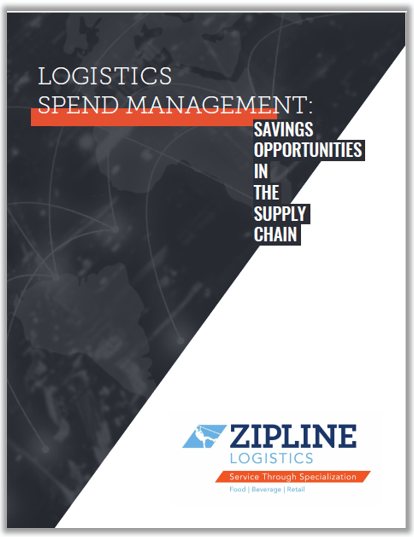Inbound transportation charges – fees related to the delivery of goods into a business – are often overlooked. Why? Unfortunately, when product is shipped, the freight cost can be buried in a supplier invoice, combined with the cost of goods purchased.
Combining costs in this way may be simpler to manage from an administrative perspective, but assuming a supplier is giving you a deal on transportation or even a fair price is a mistake.
In our experience suppliers can markup freight as much as 100% for their customers. Yikes!
The bigger your transportation spend grows the more this oversight is costing you. Because of this, companies need to know they have the option to route inbound transportation themselves and/or negotiate terms.
What can a growing company do to improve how they manage their inbound logistics costs?
Inbound Transportation Charges
The first step is to look at your invoices. It seems like an obvious thing to do, but most companies don’t break out shipping expense as a line item. Make sure your suppliers are detailing transportation costs individually to show fees for things like handling, detention, or any other accessorials.
Going forward, make it a routine to always ask up front what the shipping costs will be. This is the only sure way to know if they are too high.
Note that vendors will often calculate shipping charges differently. Some may know the exact price, while others rely on a percentage of the total cost. Try to drill down as much as possible and don’t hesitate to negotiate terms.
Managing Inbound Freight Costs
When companies grow it means good things are happening, including that they are creating shipping scale and volume. This gives shippers leverage with carriers, which can lead to better rates and lower costs. But, you only gain these benefits when you are controlling the freight. Leaving the shipping to suppliers dilutes your volume and can leave money on the table.
This is not just about cost either. There are other reasons taking control of inbound transportation is important.
Clearly, it’s vital to have the products you need for production when you want them. Leaving shipping to your supplier removes this from your control, meaning your supplier’s routing and carrier choices start to dictate your production planning. When production runs off course there can be cost increases that do not show up as a logistics expense but are rightfully so. There is a significant cascade effect too because whatever happens in production eventually impacts your delivery performance to customers.
Controlling your own inbound freight enables better visibility as well, which facilitates many of the same benefits. It also creates opportunities for consolidation.
Switching Up Your Inbound Shipping Strategy
Optimizing your inbound transportation can be complex but is not something to be afraid of. It starts with asking a few questions of your suppliers and taking control of costs and data that are rightfully yours. This enables you to gain leverage and find the best carriers to help drive deeper operating improvements for your company.
 | Logistics Spend Management: Savings Opportunities in the Supply Chain Looking to reduce your transportation spend? Check out our eBook for advice on how to identify untapped logistics savings opportunities. |

